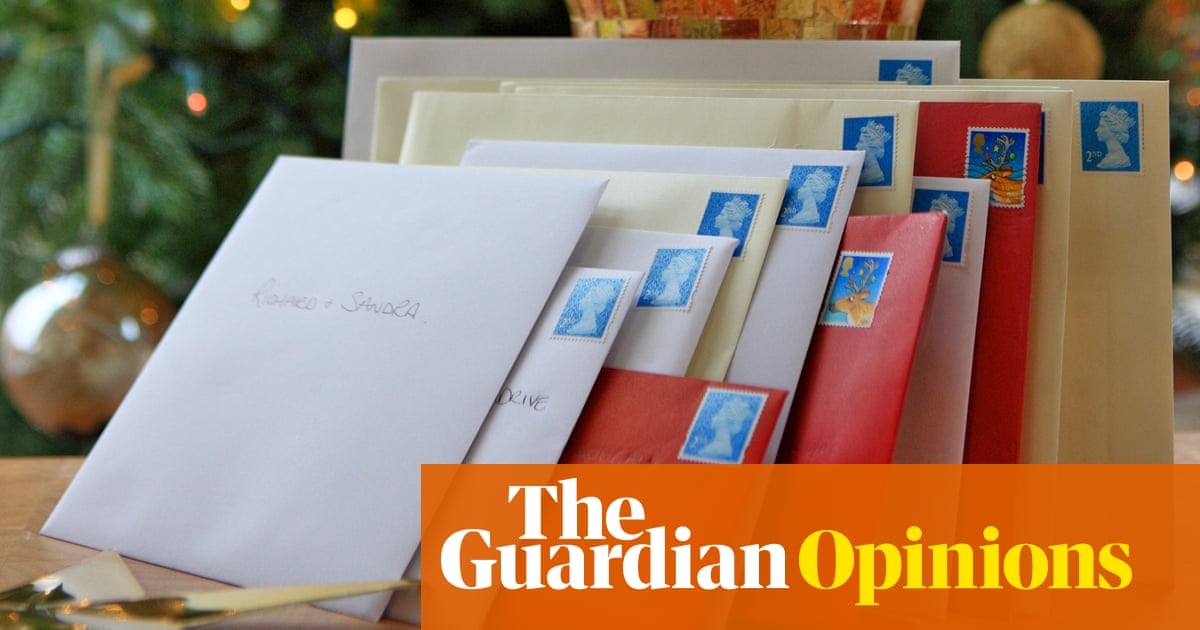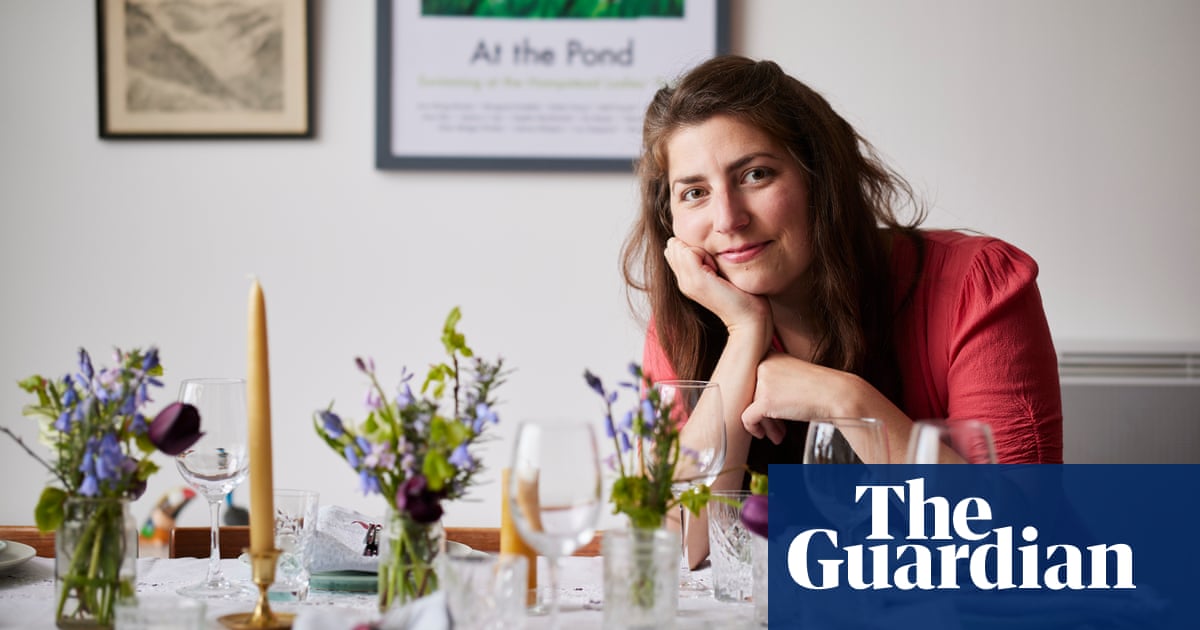
y dad was a tree man. He loved trees; he planted them; he was good with them. I remember a couple of his trees from our garden in north London – a walnut and a catalpa. Also known as an Indian bean tree (though it is neither Indian, nor produces beans), the Catalpa bignonioides‘Aurea’ has lovely, big, floppy, heart-shaped, yellowy-green leaves.
It is still here, and the walnut tree, too. I have come back to the house of my early childhood, still occupied by the family who bought it from mine in 1975. Everything seems smaller than before, apart from the trees. The catalpa bears the scars of some surgery, and leans a little; my dad leaned a little in later life. Bloody hell, I think: if the catalpa I’ve planted in my own small London garden gets to this size, it will fill it.
But here, in our old garden, the big news is the walnut at the end. It’s enormous, 20 metres high, towering over the shed that used to be my dad’s office. It’s girthy, too: if I wrap my arms around the trunk, my fingers don’t meet. I’m not generally a tree hugger, but I’ll make an exception here; this tree isn’t just the same age as I am, it was planted by my father. We’re practically twins.
The tree’s new carers say that, in the summer, its canopy dominates – and shades – everything. The woman who lives on the other side, an estate agent, often complains. My dad would enjoy that: actual daylight robbery, of an estate agent.
A tree’s roots reach deep down into the culture of the land, its folklore, literature, art. They have provided timber, shelter, fuel, energy, as well as oxygen, to the damaged lungs of a planet that still hasn’t quit. Trees are now political, not just the ones falling in the Amazon, and burning in Australia, but also in the UK: Labour pledged to plant 2 billion in its last manifesto.
Trees also tell smaller, more personal stories. Unless they came into existence the old-fashioned way – an acorn buried by a forgetful squirrel, a sycamore seed helicoptered in on the wind – they grow because someone decided to plant them. They say something about who that person is; and when that person goes, the trees are something by which they can be remembered. If not quite progeny, they are at least arboreal legacy.
My dad sold up in London – for £40,000, just before house prices went Leylandii – to rent a house in Suffolk. (He was better at horticulture than personal finance.) As well as his family (my mum, sister, brother and me), he took three walnuts from the old tree.
The new place, a rambling yellow timber-frame farmhouse, was impractical, virtually uninhabitable in winter, but beautiful. There was a big garden, in which to plant more trees. In March, I come back here, too, for the first time. It is nobody’s home now, a place rented out for holidays. And there is no one here today, because the human equivalent of Dutch elm disease is sweeping through our own species, pushing mortality to the forefront of everyone’s thoughts.
I’ve brought my own boys, eight and six, who never knew their grandfather – a sadness to me. Sometimes they ask about him; now they will get to meet a part of him. I remember him planting willows along the stream that ran past the house, just sticking cuttings into the ground. He wasn’t supposed to plant here; the land was managed by a farmer who once caught my dad guerrilla planting, pulled his willows out, threw them in the river and threatened to throw my dad in, too. But it didn’t matter to Dad whose land it was: a stream – certainly a stream his kitchen window looked out on – should have willows alongside it, and so he carried on planting. I’m delighted to find many live on, and are quite big now.
In the garden stands his tulip tree, so called because of the flowers it will bear in July. Plus a mulberry, another catalapa, then on into the orchard, a couple of pears and plums, mostly apples. The blossom is pushing through, blushing pink, bashful, hopeful and promising. My dad had a cider press and went through a brewing stage; it was cloudy, dark and dangerous.
Not all the trees are still here. An oak my dad planted has been cut down to make way for a propane gas tank. The horse chestnut from which he hung a tyre on a rope for us has also gone; but that predated him, probably by at least a century.
My boys’ interest has a time limit. Jack, the eight-year-old, is into plants and growing stuff, so he lasts longer. He asks if we can dig up a few daffodils to take home. I think we can, because this used to be my home. Thomas is mainly impressed that there is space here to actually kick a ball about, which is what he does.
Of the three walnuts that came with us to Suffolk from London, and were planted in pots, one grew and got planted out. And here it is, 45 years on, at the end of the garden – perhaps not quite as huge as its parent tree, but it will probably get there: the soil here is richer than London’s clay. My dad was tall, too, but I overtook him.
One more tree to see, round the front, not the biggest, but a favourite of his. Phew, it’s still here, and still supported by his rope-stay-pulley system. It has already burst into life, though the fruit will come much later. Last year’s quinces are still on the tree, black and shrivelled; holidayers don’t have any use for quinces, it seems. I can see my dad up a ladder with a plastic bag in November. The quinces mostly got grated into pickling jars to which vodka and sugar were added. Quince vodka – quodka – was even more dangerous than the cider.
When my dad died, aged 80, we scattered his ashes around his favourite tree. There was so much ash, even though he was little and crooked at the end. It went everywhere in the wind; I remember getting the giggles. The other trees got a sprinkle, too; I don’t remember if the weeping ashes did, they would have if we’d thought of it – because these were his ashes, and we were weeping, as well as laughing. My mother, sister, brother and I meet up every year and go for a walk on the day he died, 23 April: we call it Quince Tree Day.
Can we take a cutting, asks my Jack, the gardener of the family, to take back to London? I don’t know if we do it correctly, if it’s the right time, or even if you can grow a quince tree from a cutting. But we cut off a thin branch. We’re sure as hell going to give it a go.












